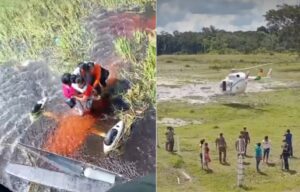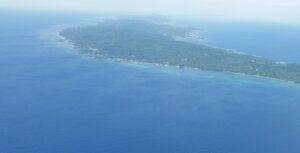I have a strange habit of losing whatever I happen to put on my feet. Once I tried to throw my boots across a river in a remote place in the Yukon so I could then wade across. While I succeeded in throwing one of the boots across the river, the other boot landed squarely in the river, floated downstream, and disappeared.
Another time I climbed an icy mountain in Iceland, and upon reaching the summit, I decided to shake the snow off my crampons. I shook one of the crampons a bit too vigorously, and it flew off my boot and bounced down the mountain. My Icelandic climbing partner carried me much of the way down the mountain on his back.
More recently, I was leading a nature walk outside Anchorage, Alaska, when — perhaps to exhibit my expertise as an outdoorsman — I tried to leap across a brook. Instead of landing on the other side, I landed in the middle of it, whereupon some of the folks on the walk cheered. One man shouted, “Terrific performance! Do it again!”
Needless to say, my boots were soaked from sole to shaft. That night I put them on the mat outside my motel room so they could get at least partially dry. The next morning, they were gone. Stolen, I assumed.
“I’ll drive you to a store where you can buy some boots,” said my friend Ted Mala, an Inupiat elder and director of traditional healing at the Alaska Native Medical Center in Anchorage. He also happened to be the son of Ray Mala, star of a 1933 film entitled Eskimo.
I warned Ted that my feet were so wide that I often had considerable difficulty finding boots or shoes that fit them. He merely nodded.
Our first stop was Sam’s Club, of which Ted was a member. Not surprisingly, none of the boots fit my feet. Then we visited a sporting goods store called Big Ray’s. No luck. Next was an Army-Navy type store located on Anchorage’s so-called Eskimo strip. Still no luck. Then we went to an outdoor store whose products were designed for mountaineers, but it would seem that mountaineers don’t have very wide feet.
In front of one store sat a drunk singing a ballad about a woman named Nellie, who “has hair all over her belly.” I stopped to listen to the song, but Ted took my arm, and we went into the store. No luck there, either.
“We’re not going to find the right boot size for me,” I said.
“I’m a Native person,” Ted replied, “and we haven’t survived this long by giving up.”
At last, we visited a small shoe store on the outskirts of town. The owner appeared to understand my dilemma, and he retreated to the store’s storage room, then came out with boots that were a perfect fit. “I have very wide feet myself,” the owner, an Algerian man, explained to me.
For his services, I treated Ted to dinner, and when I got back to my motel, I saw my other boots outside the door to my room. I learned later that the motel’s cleaning woman thought I wanted them dried, so she took them and put them in the motel’s dryer.
Now I possessed two pairs of boots. The first pair was 10 years old and looked at least twice that old. The second pair, although spanking new, reminded me — and, to this day, still reminds me — how northern indigenous people have survived in habitats much riskier than urban Anchorage, Alaska.






